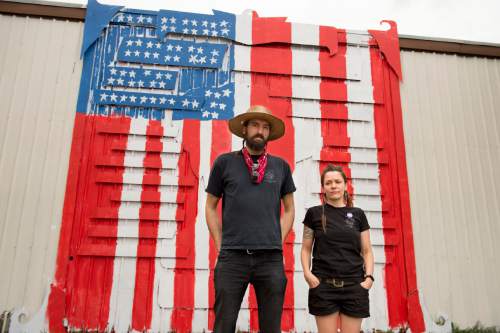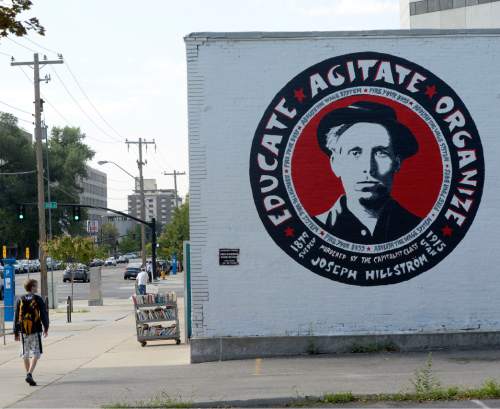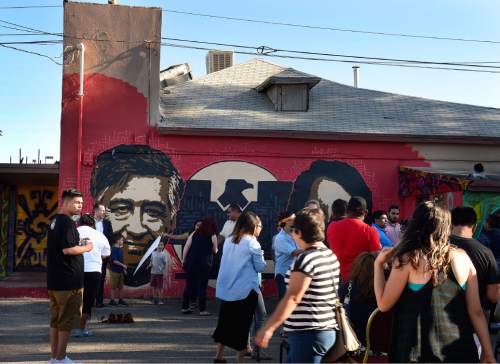This is an archived article that was published on sltrib.com in 2015, and information in the article may be outdated. It is provided only for personal research purposes and may not be reprinted.
West Jordan • More than four months after the city's attempts to remove a Mexican restaurant's murals depicting civil-rights leaders caused an uproar, West Jordan leaders continue struggling to craft a local law allowing such artwork.
At the heart of the issue is the tricky business of trying to allow free speech while regulating offensive or inflammatory images and language.
West Jordan planners came up with a draft ordinance that was narrowly approved by the planning commission but resoundingly rejected last week by the City Council.
The 7-0 vote to send the issue back to the drawing board came after Kelvin Green, a planning commissioner who had been absent from the meeting where the draft was recommended, warned the draft law was blatantly illegal.
"This ordinance is presumptively unconstitutional," said Green, an attorney. "If this ordinance is passed the way it is, West Jordan City will face litigation because this regulation is content-based."
While the draft ordinance explicitly allows murals of unlimited size on private property in commercial and manufacturing zones, it prohibits hate speech, obscenity and advertising.
Hate speech is defined as images or language "likely to incite community unrest or cause members of the community to reasonably fear for their physical safety or to freely exercise or enjoy any [constitutional] right."
Obscenity is defined as nude or partially nude images, and depictions of private parts or people engaged in "sexual activities."
Advertising is defined as anything identifying a product, service or business logo.
"All three definitions are constitutionally vague," warned Green. "If you vote for this, you're voting for litigation that we all have to pay for, that you all have to pay for."
There may be no hurry. After the community rallied in July in support of the Azteca De Oro Taqueria restaurant and its bigger-than-life murals of Cesar Chavez and Dolores Huerta, the city suspended enforcement action against the establishment. Restaurant owner Miguel Dominguez painted over some of the murals after threatened with a $100-per-day fine. But he kept the north-facing mural of Chavez and Huerta, co-founders of the National Farm Workers Association.
Councilman Ben Southworth suggested Portland, Ore., would be a good model for a mural ordinance. But he said caution does need to be exercised in crafting one for West Jordan.
"Tasteful is very subjective. There are some standards of decency our community has but I suspect that is a sticky subject when you start getting into that," Southworth said.
Councilman Jeff Haaga agreed the draft language was problematic, but said Utah's capital seems to have figured it out.
"I don't think we have to reinvent this," he said. "This was already dealt with in Salt Lake City."
Nick Norris, a Salt Lake City planning manager, says his city's solution is simple.
"What we do is we basically don't regulate murals. If somebody wants to paint something on their building they can do it and the second they put a business name or logo on it, it becomes a wall sign and that's what we regulate," said Norris.
What about dealing with hate speech or obscenity?
"We don't worry about it," said Norris. "It's a free speech issue. It's on private property and people can do that."
The ordinance — which exempts murals from the city sign regulations — has been in place for more than a decade, and Norris said he's unaware of any enforcement problems that have arisen.
Green, the West Jordan planning commissioner, believes there is a kind of self-regulation that would take place without government intervention.
"When a business wants to put up a mural, if they do something that seems to be offensive, we're all going to vote because we're not going to go there. The economy is going to drive whether that content is good or not," said Green.

















